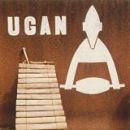Craft Cooperative, Ivory Coast
Hand weaving
Hand weaving in West Africa is an ancient craft. A sketch of a loom similar to those found today in Africa was discovered in an Egyptian tomb dating from approximately 2000 BC. The Peuls, a nomadic people, are believed to have introduced weaving into other African countries. The loom in present-day use, of simple, rustic design, is based on the same principle as those of European hand weavers, except that the frame is anchored in the ground and there is no weaver's beam.
The most striking feature of African weaving is the narrowness of the strips (4 3/4" to 8" / 12 to 20 cm), because the frame is constructed of rustic materials which can not support high stresses. These strips are sewn or crocheted together.
The articles in this catalogue, originating from the Senoufo country in the north of the Cote d'Ivoire, are all produced out of cotton and hand woven, some out of hand-spun thread (on the distaff), some out of machine-spun thread.
Weaving - Maintenance
Dyeing
The fabrics are dyed with "vat dyes" by the IK cold process, type Indanthrene, which possesses excellent fastness to laundering and light, but only moderate fastness to chlorine. Some articles are woven with indigo dyed thread, which is only moderately laundryfast, despite the fact that the thread will have been washed prior to weaving. In the case of these articles, the presence of indigo will be indicated.
Maintenance
All articles should be washed the first three times separately, by hand, to prevent any subsequent discharge. Any discharge noted on these occasions is not due to lack of colorfastness, but to elimination of unfixed dye. After these first three washings, the articles can be washed in the machine at 140 F (60C). Temperatures above 104F(40C)should not be used for articles dyed with indigo. The use of bleach and dry cleaning with trichloroethylene are not recommended.
Shrinkage
Shrinkage is less than 10 % for machine-spun thread. For hand-spun thread, it may be as high as 15 %. Shrinkage, occurs mainly in the lengthwise direction of the woven strips. The dimensions quoted are those prior to shrinkage. All raw hand-spun garments with crochet are pre-washed.
Weaving - Technical Specifications
Origin: Dioula people, villages of Waraniene, Katia, Kadioha.
Stitch used: tabby weave for the background - weft-float pattern.
Type of thread: - for the background, machine-spun: metric number 25/2, or hand-spun: metric number 5 to 7; - for the motifs, machine-spun: metric number 25/2.
Width of strips: 6" to 6 3/4" / 15 to 17 cm.
Structure (ground):
| Machine-spun | Hand-spun | |
| Warp-structure | 30-40 ends/in. | 20-28 ends/in. |
| Weft-structure | 22-30 ends/in. | 15-20 ends/in. |
| Weight / sq. yd | 6 1/2 - 8 3/4 oz. | 8 1/4 - 13 oz. |
Making up and finishing:
- the strips are zigzagged together by sewing machine in the case of machine-spun thread, sewn together by hand with the overlock stitch in the case of hand-spun thread;
- the articles are whether hemmed (clothing) or finished with fringes held with zigzag stitching or knots.
Special cases:
Kadioha blankets, see under reference TD-30;
Dikodougou blankets, see under reference TD-35.
Korhogo fabrics
Hand-painted fabrics, or so-called Korhogo fabrics, are a deeply rooted tradition in the Senoufo culture. The motifs have a religious, professional or ritual significance. Many feature geometric designs or animals found in Senoufo mythology. As a result of the strong aesthetic appeal of these designs, the craftsmen began producing purely decorative fabrics, but always using traditional techniques. These consist in applying a mineral or vegetable dye with a spatula-type iron instrument whose blade varies in thickness depending on the size of the stroke to be drawn. The design is executed freehand.
The ground is a raw fabric made up of strips 4" to 4 3/4" (10 to 12 cm) wide hand-woven from hand-spun cotton and stitched together. These fabrics should not be washed or dry cleaned.
Other Products:
Wood carvings -- including masks, sculptures and furniture --and UGAN member's pottery, bronzes, basketry and musical instruments.
For pictures of UGAN's products, view their portfolio

